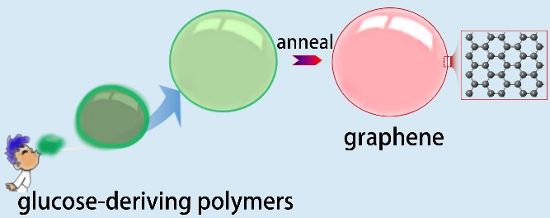World's First Success in Making a Graphene Product with 3D Strutted Structure
Development of "Chemical Blowing Method," Inspired by the Blown-Sugar Art
2013.12.16
(2014.01.10 Update)
National Institute for Materials Science (NIMS)
A research group of the NIMS International Center for Materials Nanoarchitectonics (MANA) succeeded for the first time in the world in making products with a structure wherein ultrathin graphene is glued to a 3D strutted framework. This was achieved by a novel and unique method inspired by the blown sugar art, which can be called the "chemical blowing method."
Abstract
- A research group of the International Center for Materials Nanoarchitectonics (MANA; Director: Masakazu Aono) of the National Institute for Materials Science (NIMS; President: Sukekatsu Ushioda), led by Dr. Yoshio Bando (NIMS Fellow), Dr. Xuebin Wang (NIMS Postdoctoral Researcher), and Dr. Golberg Dmitri (Unit Director), has succeeded for the first time in the world in making products with a structure wherein ultrathin graphene (monolayer or fewlayer) is glued to a 3D strutted framework. This has been achieved by a novel and unique method inspired by the blown sugar art, which can be called the "chemical blowing method".
- Graphene is an ultrathin material. It is a form of carbon but has unique properties that cannot be found in other carbon materials such as graphite, diamond and carbon nanotube. The scientists who discovered this material were awarded the Nobel Prize in Physics in 2010. Although its application has been expected to bloom, it is still difficult to make a reliable 3D graphene structure, which is necessary to overcome the weak inter-sheet connection, low surface area and insufficient mechanical strength of normal graphene products. Many researchers have attempted to make 3D graphene but failed to achieve this without deteriorating its properties.
- The research group succeeded for the first time in the world in making 3D graphene products, by applying an innovative, never-before-published method inspired by the blown sugar art, which they call the "chemical blowing method" or uniquely name as "sugar-blowing method". In this method, glucose and ammonium salt are mixed and heated at around 250°C, through which glucose-deriving polymers can be obtained. The released ammonia gases "blow" polymers by creating pressure from the inside, generating a number of small polymer bubbles of tens of microns. Concurrently, a framework for stabilizing the structure is formed and a product with a strutted 3D structure is made. After that, this product is further heated at 1,350°C to turn the polymer walls into graphene. The final 3D graphene product has a structure wherein graphene is glued to a structurally stable framework made of thin struts, specially named as "strutted graphene". This "chemical blowing method" is an innovative method for making graphene products with a 3D structure quickly, easily and at low cost.
- Electrochemical capacitors with electrodes made of the strutted 3D graphene products developed in this research can achieve a high specific power density. The new products are expected to be widely used as high-performance capacitor materials in devices for fast charging and discharging of portable electronics and electric vehicles and electromagnetic launching of aircrafts. The "chemical blowing method" will also be widely available as a novel method for making ultrathin membranes more than graphenes.
- The research results were published as an achievement of the World Premier International Center for Materials Nanoarchitectonics (WPI-MANA), in the online version of a UK science magazine, Nature Communications, on December 16, 2013, 19:00 JST.

Figure 1: An illustration of the "chemical blowing method," a novel method for making 3D graphene products, inspired by the blown sugar art. Sugar (glucose) and ammonium salt (NH4Cl) are mixed and polymerized. Glucose-deriving polymers are then "blown" by using chemically released ammonia gases, to make a number of polymer bubbles. Subsequently, by heating at a high temperature, the polymer can be converted into graphene with sustaining the bubble-network structures. The final product with the special bubble networks is named as "strutted graphene".